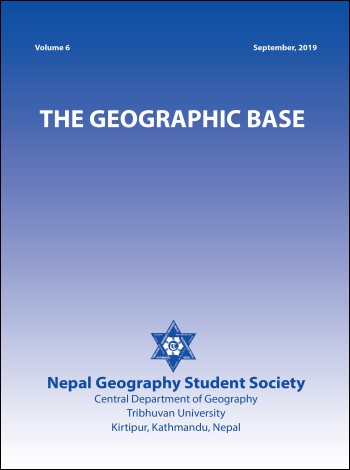Observed Climate Extreme in Nepal
DOI:
https://doi.org/10.3126/tgb.v7i0.34262Keywords:
Climate extremes, extreme precipitation indices, temperature indices, RclimDexAbstract
The climate-induced disasters are causing more than half of the total economic and human losses annually due to natural disasters and that hampers the socioeconomic development of the country. In recent decades, these climate extreme induced disasters are increasingly becoming more pronounced and devastating, is further known to be intensified due to anthropogenic warming. In this context, this study endeavors to address the research gap on the spatial and temporal variability of temperature and precipitation extremes in Nepal. Here, 26 climate extreme indices of temperature (13) and precipitation (13) as recommended by the World Meteorological Organization (WMO) were calculated using RClimDex software for 90 meteorological stations. Then the statistical significance of the long-term trend of the indices was tested using the Mann-Kendall method, and true magnitude of the trend was identified utilizing Sens’ slope method for each index at each station. Overall, the hot (warm days, warm nights, summer days, tropical nights, and warm spells) and cold (cold days, cold nights, cold spells) extreme indices show significant positive and negative trends respectively. However, extreme precipitation indices also show an increasing trend, but the statistical significance and spatial coherence is low. Extreme temperatures increased more in the Mountain and Himalayan regions than the other regions. Extreme wet day precipitation events are significantly increasing in far western region, adjoining areas of mid-western and western Siwalik though Mountain regions and then again in the central and eastern Mountains and Himalayan regions.
Downloads
Downloads
Published
How to Cite
Issue
Section
License
© Nepal Geography Student Society




